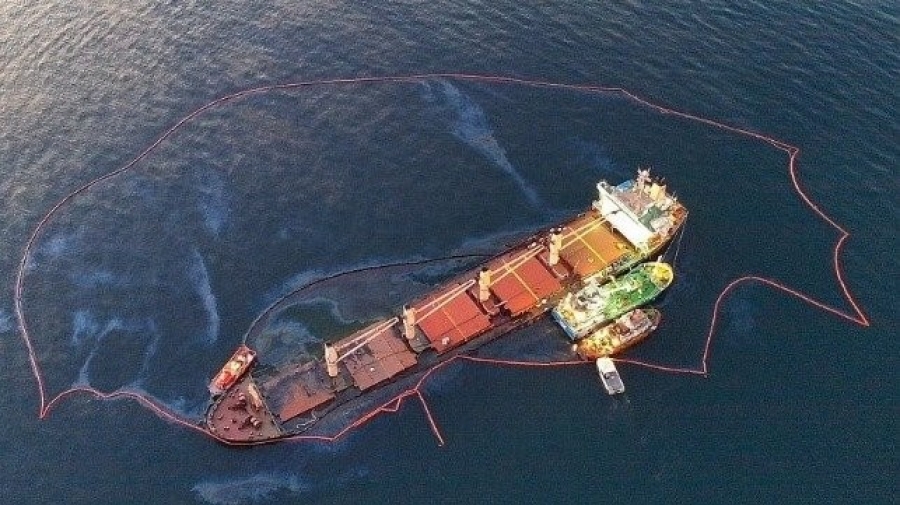Salvage teams working around the clock on the wrecked bulker beached off Gibraltar passed a key milestone reporting that they have recovered nearly all of the oil aboard the vessel. The recovery efforts are continuing to focus on various parts of the ship while clean-up efforts also made progress in reducing the flow of oil onto Gibraltar’s beaches. As a result, the government is looking to step down starting on Tuesday, September 6 from the “major incident” to permit more activities in the port.
“With the exception of Tank 2, the salvors are confident that all concentrations of pumpable oil have been extracted, including those in the main engine room tanks. Some product remains in Tank 2, which the salvors plan to attempt to extract,” the Government said in its end-of-day update on Monday, September 5.
They, however, warned while less of a threat to the environment that there are still small tanks around the ship with small quantities that need to be emptied. There have also been some discrepancies between the amounts of fuel reported by the vessel’s crew and what was removed by the salvage teams. A final measure is still being taken on the amount of diesel and low sulfur fuel oil removed from the tanks plus efforts have also begun looking for the presence of any oil concentrations in void spaces and non-tank spaces.
Yet, while the teams are confident that most of the recoverable material has now been removed, government officials continue to warn that “continued discharge of pollutants is expected until the time that the salvage operations are complete.”
The containment and recovery efforts were complicated overnight by stronger winds. The teams reported that the second containment boom around the vessel had been displaced but with the aid of Salvamento Maritimo they were restoring the boom and adding weights to hold it in place. A boom near a beach also needed to be repositioned while five vessels also remain in the area with sorbent booms deployed. There are also two pairs of vessels towing a “J” formation boom to capture oil that leaks past the booms around the vessel.






















